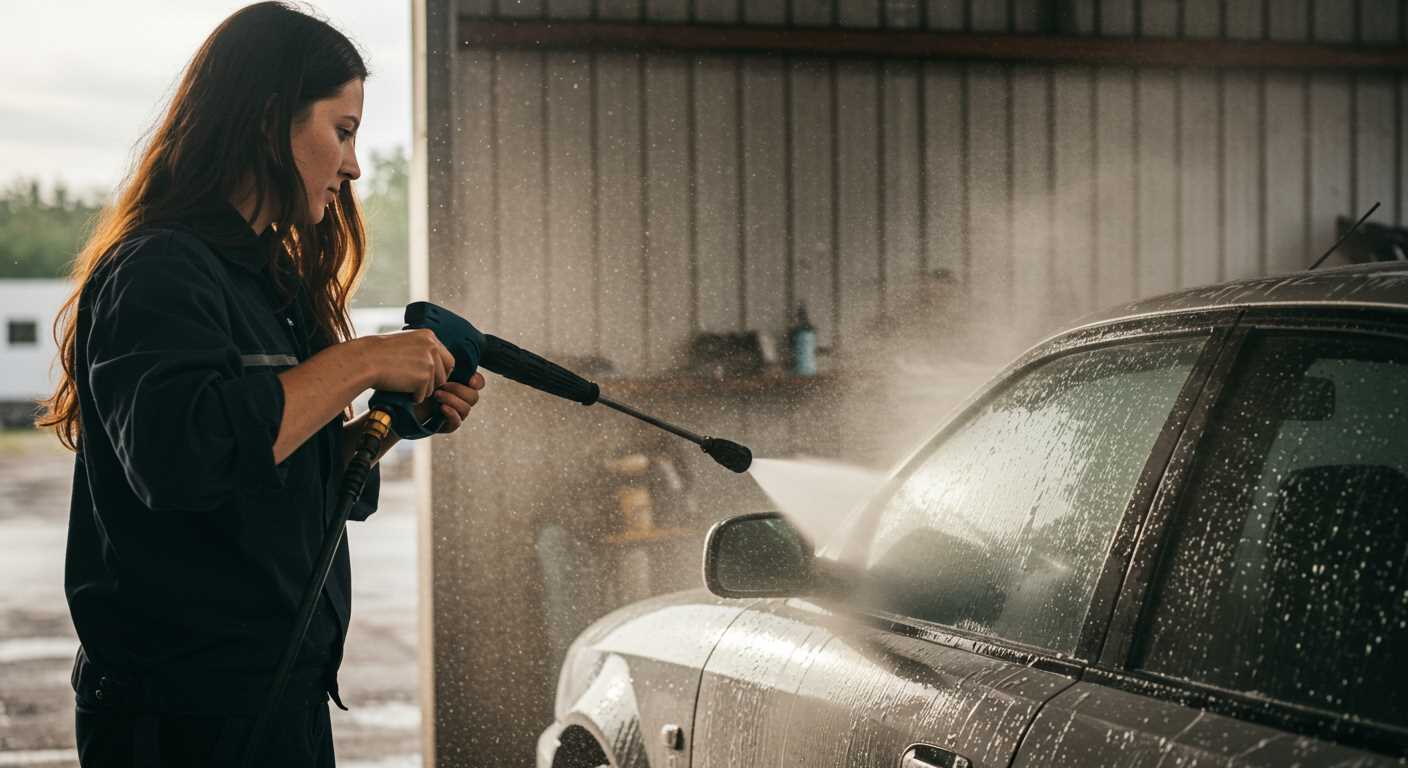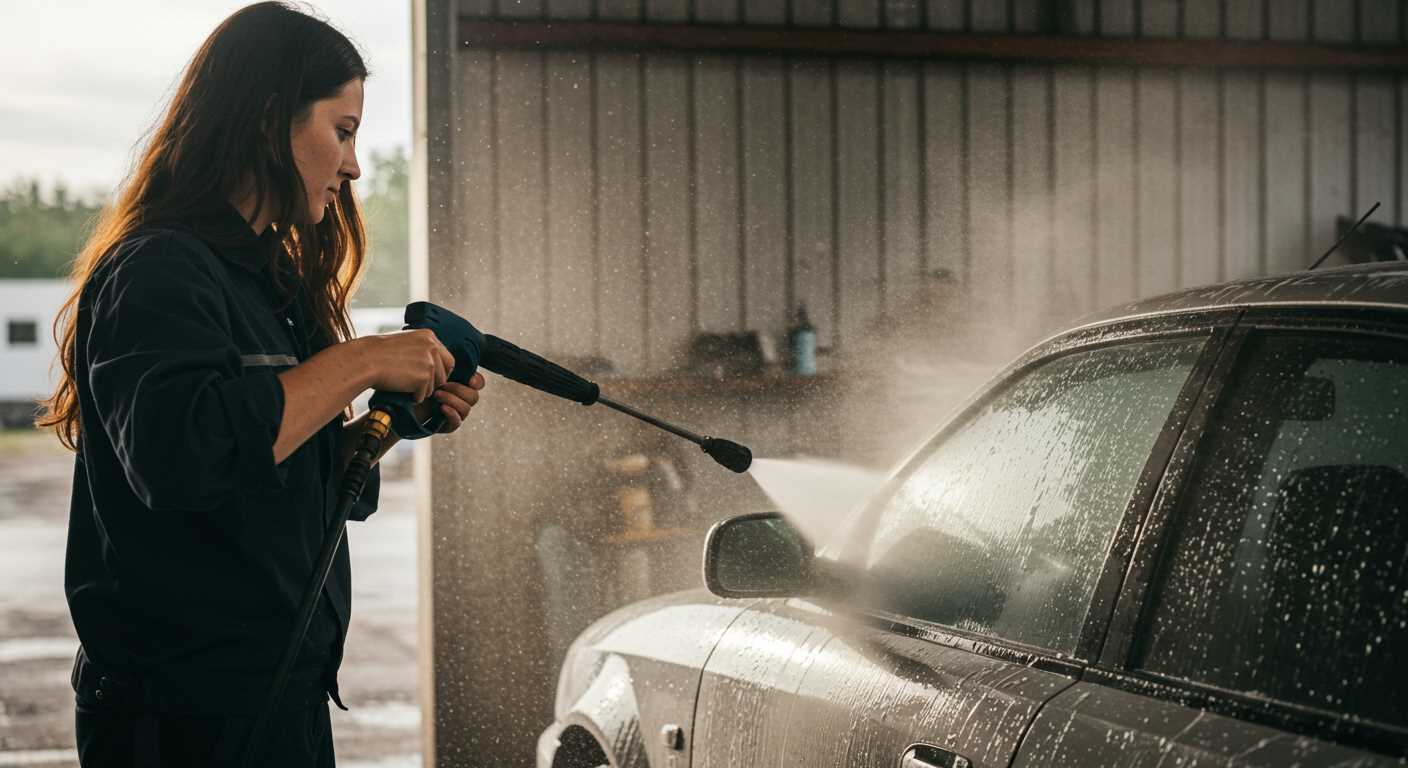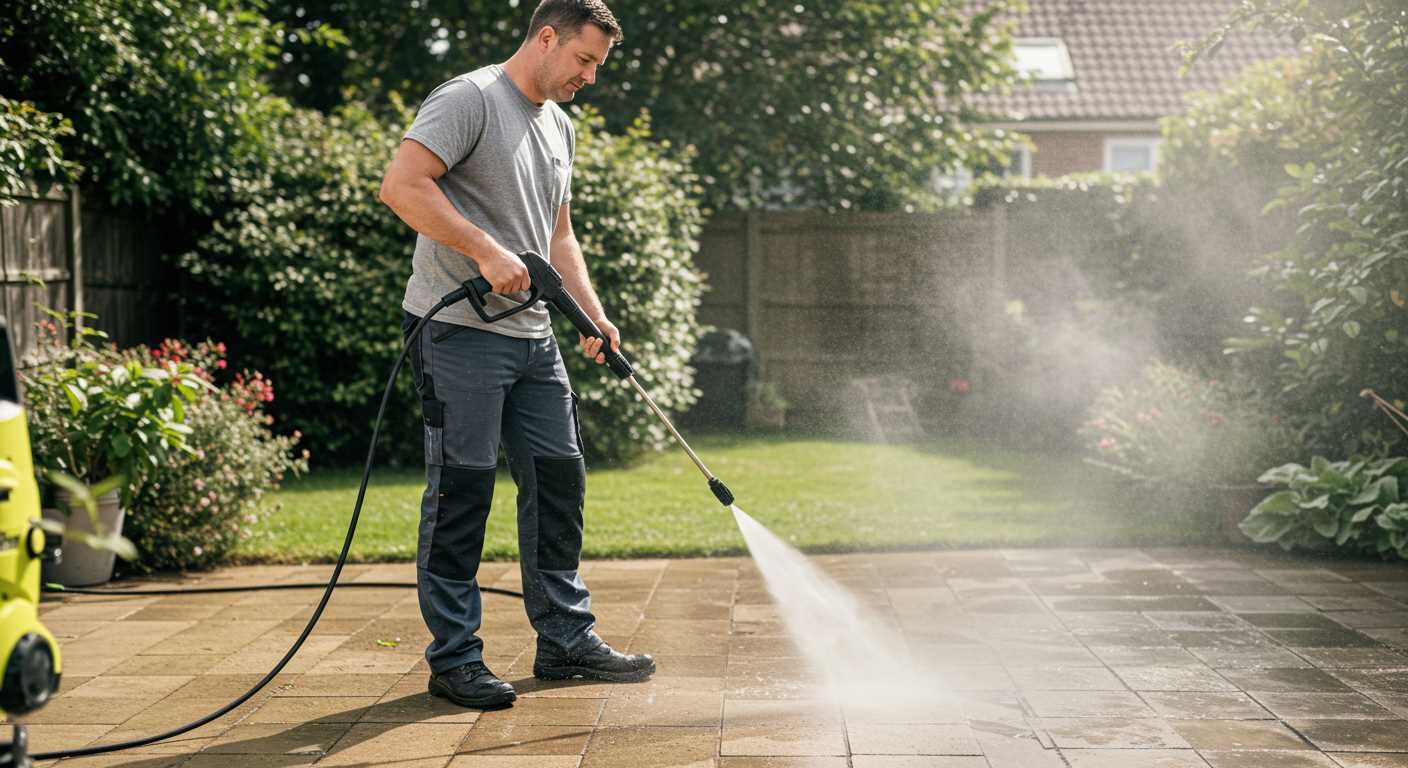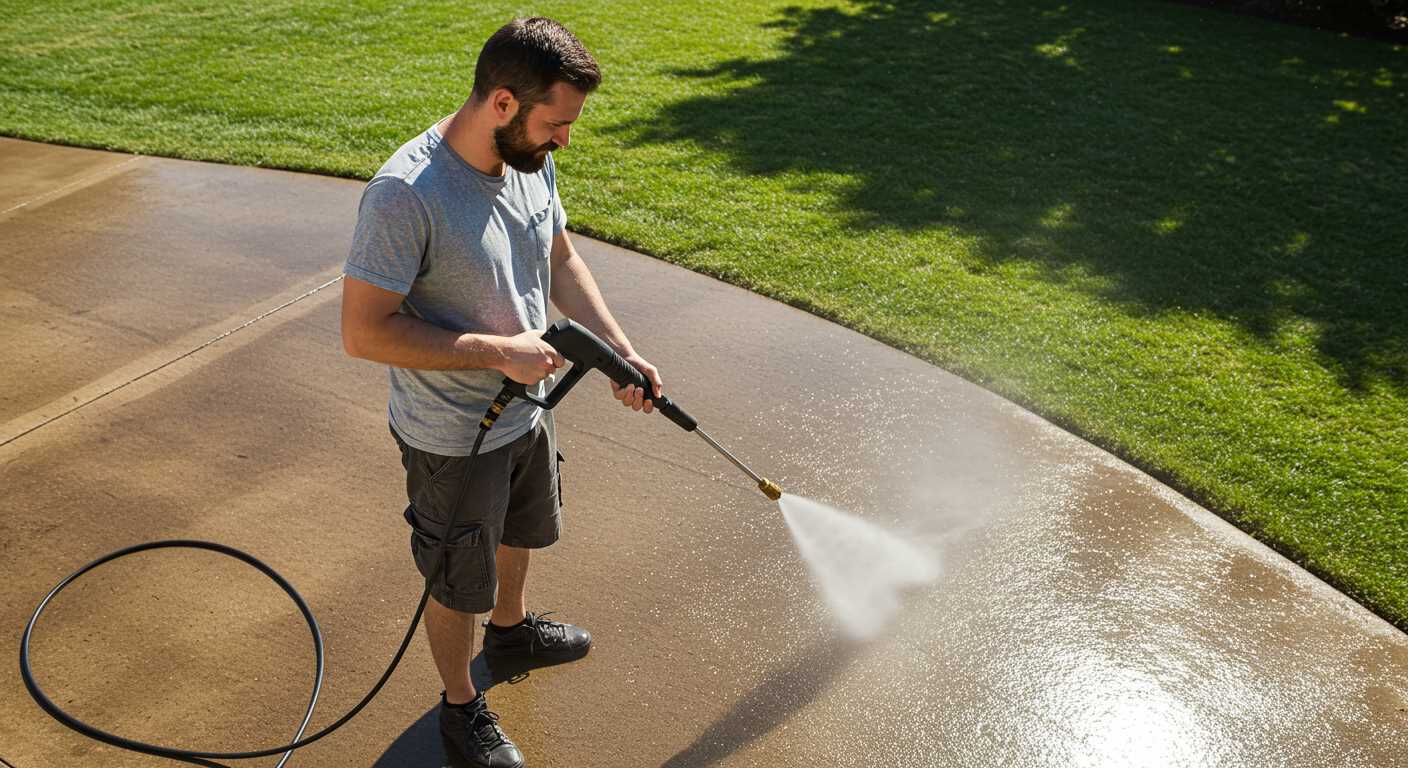




Begin with a simple inspection of the spray head. Remove it from the lance and visually assess for any visible blockages. You may find debris or mineral build-up that can restrict water flow. Use a soft brush or compressed air to gently dislodge any particles that are stuck.
If you notice stubborn residue, soak the spray head in a mixture of vinegar and water for about 30 minutes. This natural solution effectively dissolves mineral deposits without causing damage. After soaking, rinse it thoroughly under warm water to ensure all remnants are gone.
For those persistent blockages, a thin wire or a small needle can be beneficial. Carefully insert it into the orifice of the spray head to clear any remaining obstructions. Be cautious not to enlarge the opening, as this can alter the spray pattern and reduce performance.
Lastly, before reattaching, check the O-ring for wear and tear. A damaged O-ring can lead to leaks and decreased efficiency. Replace it if necessary to maintain optimal functionality. Regular upkeep of your cleaning tool’s spray head ensures that it operates at peak performance, making your outdoor tasks easier and more effective.
Cleaning Techniques for Nozzle Blockages
To tackle blockages effectively, begin by removing the tip from the lance. This allows for direct access and easier manipulation. Use a small wire, like a paperclip or a needle, to gently poke through the opening. Be careful not to damage the internal components. If the blockage is stubborn, soaking the tip in warm soapy water can help loosen any residues.
Utilising Rinsing Agents
In my experience, a rinsing agent is also suitable as a cleaning agent for these devices. Mixing a small amount with water can break down grease and grime that may have accumulated. After soaking, rinse thoroughly with clean water to ensure no cleaning agent remains in the system, as it can cause further issues.
Regular Maintenance
After every few uses, I recommend inspecting the nozzle for any signs of wear or build-up. Regularly clearing any debris can prolong its lifespan and maintain optimal performance. Keeping the area around the inlet free from dirt can prevent future blockages, ensuring a smooth operation every time.
Identifying Clogs in the Nozzle
Begin by examining the spray pattern. If it appears uneven or sporadic, this often signals a blockage. A consistent, focused jet is what you should expect. Pay close attention to any unusual sounds as well; a struggling device may produce a different pitch than normal.
Next, take note of the flow rate. If the liquid appears to trickle rather than stream, this indicates potential obstruction. In my experience, I’ve found that even the smallest debris can cause significant issues. Often, it’s something as simple as dirt or a piece of vegetation that gets lodged within.
Another telltale sign is the presence of residue around the tip. If you notice any buildup around the exit area, it’s likely that flow is being compromised. I recall one instance where a client had persistent issues due to soap residue that had hardened, causing a complete halt in functionality.
To confirm a blockage, remove the attachment and inspect it visually. Use a flashlight to check for any visible debris. If you see something, consider using a small tool, like a wire or a pin, to gently dislodge it. Always handle with care to avoid damaging the component.
Regular checks for clogs can save you time and frustration. It’s a simple habit that can keep your equipment operating smoothly. Trust me, a few minutes spent inspecting can prevent a longer, more arduous repair later on.
Tools Required for Cleaning
For a thorough job, gather these specific items:
- Safety goggles – Protect your eyes from debris and potential splashes.
- Gloves – Ensure your hands are shielded from harsh chemicals or sharp objects.
- Small wire brush – Ideal for scraping away stubborn residue.
- Toothpick or a thin metal rod – Perfect for clearing tight spaces and small openings.
- Bucket – Useful for holding cleaning solutions or rinsing components.
- Garden hose – Necessary for rinsing parts and ensuring water flow.
- White vinegar or a descaling solution – Effective for dissolving mineral build-up.
Additional Helpful Tools
In some cases, having extra gear can save time:
- Compressed air canister – Expels dirt and debris from hard-to-reach areas.
- Soft cloth or sponge – Handy for wiping surfaces and ensuring a pristine finish.
- Spray bottle – Useful for applying cleaning solutions evenly.
Having these tools ready will streamline the process and enhance results. Remember, a little preparation goes a long way in achieving optimal performance from your equipment.
Step-by-Step Cleaning Process
Begin the process by disconnecting the equipment from its power source to ensure safety. I always take this precaution seriously, as it prevents any accidental activation while working.
Next, remove the tip from the lance. This part can be quite delicate, so I recommend using a wrench if it feels tight. Once detached, inspect it under good lighting to assess the level of blockage.
Prepare a solution of warm water and mild detergent. Soaking the tip in this mixture for about 15-20 minutes can help dissolve stubborn debris. During my years in the field, I’ve found that a simple soak often does wonders.
After soaking, use a soft brush or an old toothbrush to gently scrub the tip. Focus on the orifice and surrounding areas where residue tends to accumulate. I remember one instance when a built-up layer caused a significant drop in performance; a thorough scrub made all the difference.
If the blockage persists, a straightened paperclip or a similar tool can be effective. Carefully insert it into the orifice to dislodge stubborn particles. Exercise caution to avoid damaging the internal components; I’ve seen many tips ruined by excessive force.
Once cleared, rinse the tip thoroughly under running water. This step ensures that any remaining debris is washed away. Trust me, skipping this can lead to reinfection of the tip.
Reattach the tip to the lance, ensuring it is secure. I’ve had tips come loose during operation, and that can be both frustrating and hazardous.
Finally, reconnect to the power source and conduct a test run. Observe the spray pattern; it should be even and powerful. If it’s not, repeat the process or consider further inspection for deeper issues.
Testing the Nozzle After Cleaning
Once you’ve finished tidying up the spraying attachment, it’s crucial to ensure it functions properly. This step can save time and frustration during your next task. Begin by connecting the device to a water source and turning it on without applying any detergent. This initial test helps you observe the water flow and pattern.
Visual Inspection
As the water flows, watch for any irregularities in the spray pattern. A well-maintained attachment should deliver a consistent and focused stream. If you notice uneven spraying or weak flow, further examination might be necessary. Look for any remaining debris that could be obstructing the path.
Pressure Evaluation
Next, assess the pressure output. A sudden drop in intensity can indicate lingering blockages or wear. Use a pressure gauge if available, as it provides precise measurements. Compare these readings to the manufacturer’s specifications. If the numbers are significantly lower, it may be time for a deeper inspection or even a replacement.
| Test Aspect | Ideal Condition | Action if Unmet |
|---|---|---|
| Water Flow | Consistent and focused | Check for obstructions |
| Spray Pattern | Uniform coverage | Inspect for damage |
| Pressure Output | Meets manufacturer specs | Consider further cleaning or replacement |
After completing these tests, if everything looks good, you’re ready to tackle your next cleaning project with confidence. If problems persist, revisiting your cleaning techniques or seeking professional advice may be necessary. Trust me, ensuring your gear is in top shape makes all the difference in achieving optimal results.
Preventative Maintenance Tips
Regular inspections of your equipment can save time and hassle. Make it a habit to check for wear and tear on hoses and connectors before each use. I’ve seen too many units fail because of unnoticed cracks or leaks. A simple visual check can prevent bigger issues later.
Storage Practices
Store your machine in a dry, cool place. Extreme temperatures can affect the seals and components. I learned this the hard way when a cold snap caused some seals to crack on a unit I had left outside. Protect your investment by keeping it indoors or covered, especially during harsh weather.
Routine Lubrication
Every few months, lubricate moving parts to ensure smooth operation. A little grease on pivot points can extend the life of your equipment significantly. I’ve found that neglecting this step often leads to premature wear. It takes just a few minutes but pays off in longevity.
For those interested in technology, you might find it insightful to ponder whether are digital cameras better than cell phones as you consider innovations in cleaning tools. The same principles of maintenance apply across various devices.
When to Replace the Nozzle
Replace the attachment if it shows signs of significant wear, such as cracks, chips, or a distorted shape. A damaged tip will not only reduce performance but can also pose safety risks. Here are specific indicators that a replacement is necessary:
- Reduced Pressure: If you notice a drop in water pressure despite cleaning efforts, the attachment may be worn out.
- Uneven Spray Pattern: An inconsistent spray can indicate damage, affecting your cleaning tasks.
- Visible Damage: Inspect for any physical defects, including fractures or holes.
- Corrosion: If the material shows signs of rust or corrosion, it’s time for a new piece.
- Frequent Clogs: If clogs happen repeatedly even after maintenance, consider a new component.
Long-Term Usage Considerations
Even with proper care, attachments have a lifespan. If it’s been in service for several years, replacement might be a wise decision. I recall a time when I hesitated to replace an old component, thinking cleaning would suffice. Eventually, the performance deteriorated, leading to more frustration than efficiency. Investing in a new part can save time and improve results significantly.
Choosing the Right Replacement
Ensure compatibility with your equipment by consulting the manufacturer’s specifications. Consider the type of tasks you frequently undertake; a more powerful attachment may be beneficial for tougher jobs. Investing in a quality replacement can enhance your cleaning routine and yield better outcomes.




.jpg)


